J. Strom Thurmond Reservoir, South Carolina
|
J. Strom Thurmond Dam
-
Also know as the Clarks Hill Dam
-
Built between 1946 and 1954 by the U.S. Army Corps of Engineers on the Savannah River
-
Concrete-gravity dam flanked by embankment dams, with the concrete structure spanning 1,096 feet and rising 204 feet tall
-
Located in Columbia County, Georgia and McCormick County, South Carolina, Lake Thurmond has a surface area of 71,100 acres
-
The JST Power Plant has 7 turbines with an installed capacity of 380 MW
|
JST Fish Habitat Mitigation System Design Goals:
Purpose: Provide striped bass habitat
Where: Lower 8 miles of JST Reservoir
Layer: 18 - 24 degrees celsius
When: June - September (low DO season)
Aerated Zone: 5 mg/L for 1 mile (no less than 4.5 mg/L)
4 mg/L for 4 miles (no less than 3.5 mg/L)
Releases: 3 mg/L (before turbine aeration)
Restrictions: Diffusers no higher than elevation 275 ft. (83.8m)
|
Objective
A diffuser system, consisting of nine lines spread out over four elevations, was installed at the J. Strom Thurmond Reservoir as part of a litigation agreement to mitigate fish habitat that was being impacted by operation of the hydropower pump back units located upstream at the Richard B. Russel project.
After years of efforts to solve fish entrainment issues, the pump back units at RBR were approved for operation in 2001. With this approval, the USACE agreed to limit pump back operations at RBR to 2 units out of 4 until a fish mitigation system was implemented.
The JST oxygen system is designed to place oxygen in the reservoir at the specific temperature range suitable for striped bass habitat, as well as to enhance dissolved oxygen (DO) levels at the dam.
|
Facilities
- The 9 line diffusers are supplied with pure gaseous oxygen from a liquid storage and supply facility
- Liquid oxygen is trucked to storage tanks onsite
- Vaporization of oxygen provides the pressure to move the gas through the diffusers
- JST oxygen supply facility is capable of 3,600 scfm (over 200 tons) of oxygen per day
|
Nine diffusers were installed at JST about five miles upstream of the dam
|
The diffusers are as much as a mile from the oxygen supply facility
|
The diffusers are installed at four elevations chosen to place oxygen in the 18 to 24 degree Celsius range during the summer months
|
Extensive monitoring and testing in 2011 showed the oxygen system capable of meeting all design goals ("Oxygen System to Create Fish Habitat and Enhance Hydropower Water Quality at the JST Reservoir"). Initial results from fish tracking studies indicate increased number of striped bass in the new habitat ("Distribution of Striped Bass in JST Reservoir, South Carolina - Georgia, in Relation to Pump Storage Operation and Hypolimnetic Oxygenation").
|
Reservoir profiles in 2012 show project goals being maintained:
|
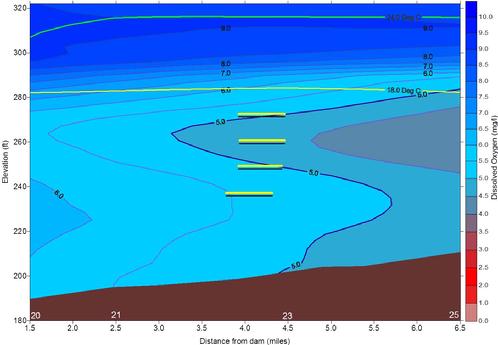 |
| May 21, 2012 |
|
|
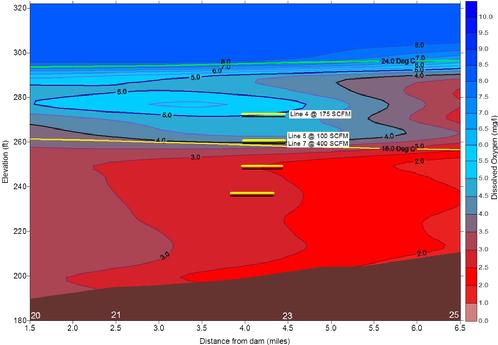 |
| June 28, 2012 |
|
|
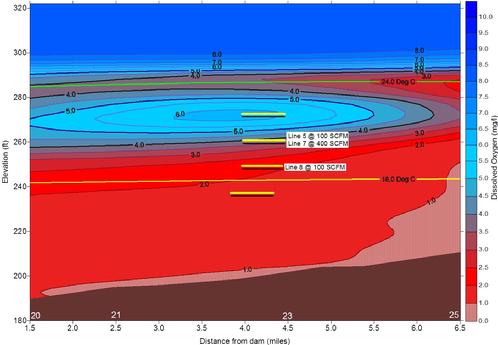 |
| July 24, 2012 |
|
|
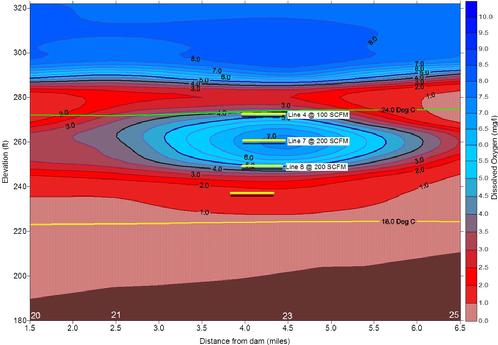 |
| August 23, 2012 |
|
|
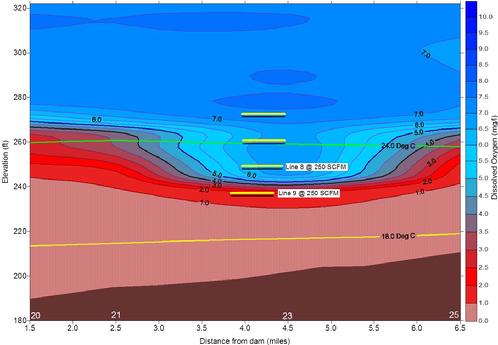 |
| September 25, 2012 |
|
|
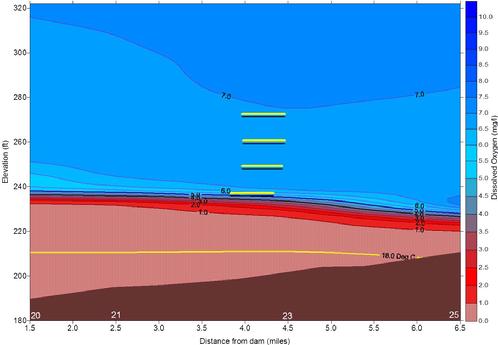 |
| October 17, 2012 |
|
|
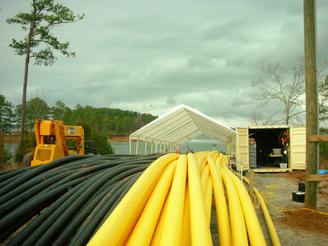 |
| 50 foot sticks of pipe, cleaned and ready to weld |
|
|
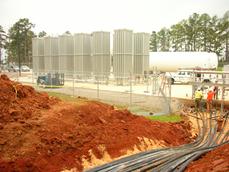 |
| The large LOX site at JST |
|
|
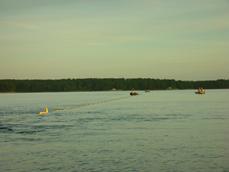 |
| Positioning a line |
|
|
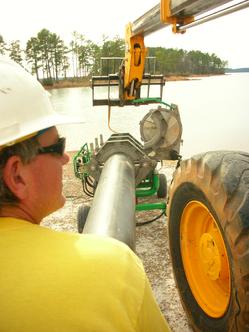 |
| Preparing to weld the 14" diameter sleeve pipe |
|
|
|
Publications and References
|
|
Mark H. Mobley, P.E., Paul Gantzer, Ph.D., P.E., Gary E. Hauser, P.E., Richard Jim Ruane, Jamie A. Sykes
Presented at HydroVision International 2012
Kentucky International Convention Center
July 17-20, 2012
|
|
Jason Bettinger, Wildlife Biologist
South Carolina Department of Natural Resources
Study Progress Report
December 12, 2012
(Study begins on page 109 of SCDNR Report)
|
|